Open Cities 5 About intercultural coexistence
Open Cities 5
About intercultural coexistence
OpenCities Spot Check
Among the OpenCities partners Dublin is holding a festival of world cultures and Bukarest is providing more equal opportunities for its Roma population. Madrid has celebrated World Day for Cultural Diversity and Dialogue and Development, supports its multicultural character and is fostering its social and intercultural coexistence in its Second Plan. These activities can be found through the OpenCities website <opencities.britishcouncil.org and the hot links to partner cities.
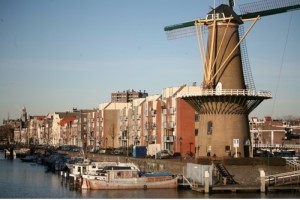
Dia 1 Delfshaven, a landmark of coexistence
Luuk Boelens’ Actor-Related Approach to Cities
An interesting approach outside the OpenCities network is presented by Luuk Boelens in The Urban Connection, an actor-related approach to urban planning (010 Publishers 2009). A whole chapter deals with transnational communities and how they are settling down in host cities while keeping ties with their native countries. His book investigates how to involve immigrant communities more actively in the shaping of the places in their host cities where they live, work and play, even if they keep ties with the countries where they were born.
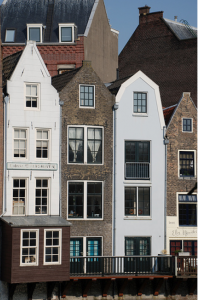
Dia 2 Delfshaven historic urban structure
Two experiences with immigrant communities in the Netherlands are of great interest here. They are located in Delfshaven, an ancient harbour area incorporated into the Rotterdam conurbation. Ports have been, and remain preferred gates of entry for foreign people, and immigrants tend to settle there. Delfshaven has a rich history of waves of immigration, including people from Delft, the Flemish, Spanish, English separatists, and others. The latest newcomers are Turks and Moroccans, besides Surinamese, Cap Verdans and Antilleans. They occupied cheap accommodation in this quarter with its Haussmannian layout and dedicated workman dwellings, set up their ethnic facilities on the periphery and concentrated their meeting places within. As usual in such transient areas artists joined the migrants.
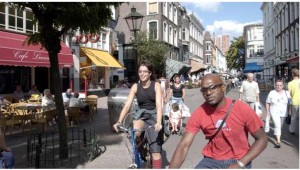
Dia 3 Delfshaven street scene
Trans-migrants
Trans-migrants are at home in several worlds, speak several languages and earn their living through border crossing activities. Many natives see this trans-national orientation and the way migrants identify with their country of origin, as well as with other migrant communities dispersed internationally and throughout their city as an obstacle to their perception of integration into a host country. Holding dual nationality is exacerbating such ambiguity and perceived as lack of allegiance and loyalty.
Ahmed Aboutaleb of Moroccan origin has been elected mayor of Rotterdam, a city with 45% inhabitants of foreign origin. In 2004 he commissioned Erik Snel and others with a survey on refugees, foreign workers and new labour migrants from six ethnic communities to investigate the relationship between trans-national involvement and local integration. Length of stay was relevant but short stay ‘ex-pats’ of international companies, such as North Americans felt closely drawn to their temporary host countries while those with relatively-weak socio-economic positions tended to maintain strong mutual relationships with their compatriots, their values and their customs. Their interaction with the host population tends to be in their immediate neighbourhood, which has led to interesting relations between the historic parts of Delfshaven and the surrounding migrant districts.
Biz Botuluyuz and Le Medi
When the demolition of their abodes were displacing the Turks they organised themselves into a collective. With the support of a local social welfare organisation they designed a plan for affordable dwellings, obtained a subsidy and a purchase guarantee from the housing corporation originally in charge of regeneration. During this lengthy process of change the original 30 initiators were gradually replaced by other Turks who completed the Biz Botuluyuz estate with Turkish cultural features.
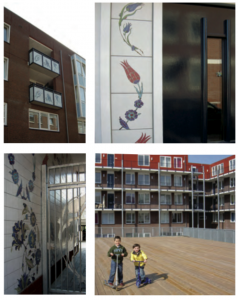
Turkish quarter in Rotterdam
The other initiative of a hundred low cost dwellings for sale was launched by two Moroccan entrepreneurs and later obtained the support of the local housing corporation. Interestingly, the Mediterranean character of Le Medi and its inbuilt growth possibilities attracted indigenous inhabitants who make up three quarters of the inhabitants. On the basis of their success larger estates of this nature are being initiated in this neighbourhood. They include a project for a Moroccan House of Culture supported by the Moroccan government, akin to the existing Chinese European Centre, where inhabitants from all cultures can learn more about each other and trans-national living would be able to take shape.
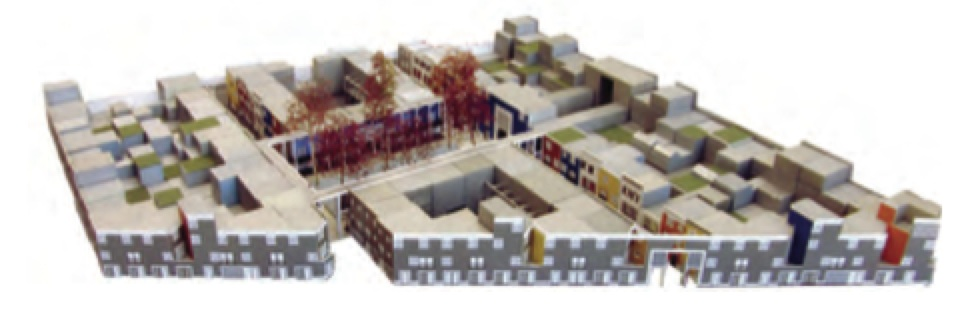
Dia 5 Moroccan quarter in Rotterdam
These initiatives represent the physical expression of a truly open city where inhabitants from different cultures and economic backgrounds, including the native Dutch have chosen to live among each other and to share the public realm.
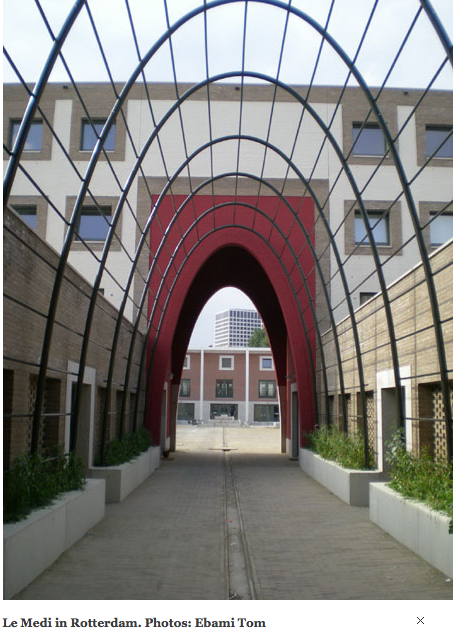
Dia 6 Entrance to the Moroccan quarter
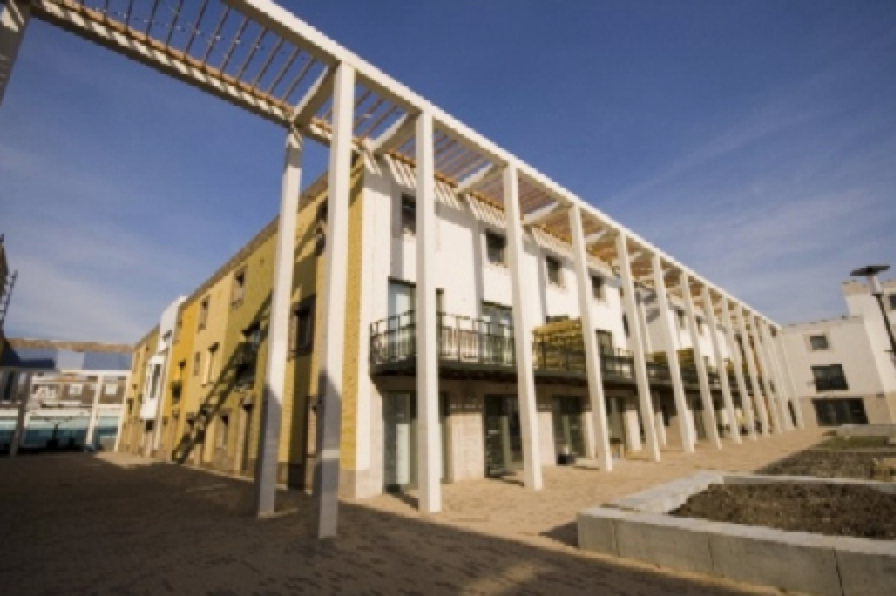
Beyond Europe
These are European examples, but many exist outside Europe. Boelens uses Liberdade in Sao Paolo and Villa 31 in Buenos Aires as comparison to study the evolution of immigration toward cohabitation and integration through mutual cultural influence, instead of one-sided acculturation or cultural absorption. It is worthwhile to promote these innovative steps toward genuine and equitable city openness. How far these experiments correspond to the OpenCities definition of openness, as ‘the quality and sum of the local conditions that attract and retain international populations over time’ which may imply educated footloose brain-workers to boost their knowledge societies remains to be discussed.
End.
